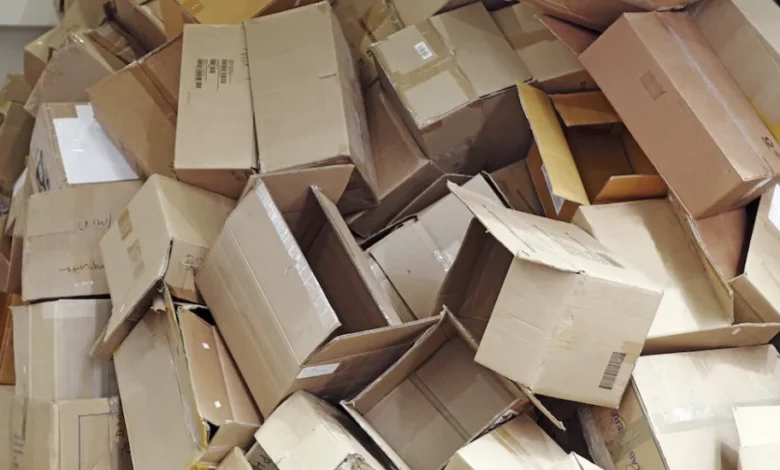Your Uncomplicated Guide to Packaging Compliance and Best Practices

As the landscape of global trade and consumer expectations evolves, navigating the myriad of regulations governing custom packaging can be challenging.
Compliance with these regulations is critical not only for legal reasons but also for maintaining brand reputation and ensuring customer safety.
This article will explore and outline the key regulations affecting custom packaging, best practices for compliance, and strategies for staying ahead in a complex regulatory environment.
The Regulatory Landscape
International Standards and Guidelines
ISO Standards The International Organization for Standardization (ISO) sets widely recognized standards for packaging materials, safety, and environmental impact. Adherence to ISO standards ensures that packaging meets international quality benchmarks.
UN Packaging Requirements For the transport of dangerous goods, the United Nations has specific packaging requirements outlined in the UN Recommendations on the Transport of Dangerous Goods. Compliance with these requirements is mandatory for shipping hazardous materials.
Regional Regulations
European Union The EU has stringent regulations on packaging and packaging waste, primarily governed by the Packaging and Packaging Waste Directive. This directive emphasizes reducing packaging waste, encouraging recycling, and ensuring that packaging materials do not contain harmful substances.
United States In the US, the Federal Food, Drug, and Cosmetic Act (FD&C Act) regulates packaging for food, pharmaceuticals, and cosmetics to ensure they are safe for consumer use. Additionally, the Environmental Protection Agency (EPA) enforces guidelines related to packaging materials and waste management.
Industry-specific Regulations
Food Packaging Food packaging must comply with safety standards to prevent contamination. The FDA in the US and the European Food Safety Authority (EFSA) in the EU set regulations for materials that come into contact with food. Use FDA compliant pouches and food safe, high barrier materials to make sure your products don’t get recalled.
Pharmaceutical Packaging The pharmaceutical industry faces rigorous packaging regulations to ensure product integrity, prevent tampering, and protect patient safety. These regulations cover everything from material composition to labeling requirements.
Key Compliance Areas
Material Safety and Composition
Non-toxic Materials Packaging materials must be non-toxic and safe for their intended use. This is particularly important for food, beverage, and pharmaceutical packaging, where direct contact with the product occurs.
Heavy Metals Restrictions Regulations often limit the presence of heavy metals such as lead, mercury, cadmium, and hexavalent chromium in packaging materials. Compliance with these restrictions is essential to prevent environmental contamination and protect consumer health.
Environmental Impact
Recyclability Packaging should be designed with recyclability in mind. Many regions have regulations that require a certain percentage of packaging materials, even down to spouts and degassing valves, to be recyclable or made from recycled content.
Biodegradability Some markets have specific requirements for biodegradable packaging, especially for single-use items. Ensuring that packaging materials meet biodegradability standards can enhance compliance and appeal to eco-conscious consumers.
Labeling and Information
Clear Labeling Accurate and clear labeling is crucial for regulatory compliance. Labels must include necessary information such as product details, safety warnings, and instructions for use.
Recycling Symbols Incorporating appropriate recycling symbols and instructions on packaging helps consumers dispose of materials correctly and supports recycling initiatives.
Best Practices for Compliance
Stay Informed
Regulatory Updates Regularly monitor updates to packaging regulations in all markets where your products are sold. Subscribe to industry newsletters, join professional organizations, and attend relevant conferences to stay informed.
Expert Consultation Work with regulatory experts or legal consultants who specialize in packaging compliance. Their expertise can help you navigate complex regulations and avoid costly mistakes.
Implement Robust Quality Control
Material Testing Conduct regular testing of packaging materials to ensure they meet all safety and regulatory standards. Use certified laboratories to verify material composition and performance.
Supplier Audits Perform audits of your suppliers to ensure they adhere to regulatory requirements and quality standards. Building strong relationships with compliant suppliers can reduce risks and enhance supply chain reliability.
Sustainability Initiatives
Eco-friendly Design Incorporate sustainable design principles into your packaging. Use materials that are recyclable, biodegradable, or made from renewable resources to comply with environmental regulations and meet consumer demand.
Waste Reduction Implement strategies to minimize packaging waste. This includes optimizing packaging size, reducing unnecessary layers, and using lightweight materials to lower environmental impact and comply with waste reduction regulations.
Strategies for Future Compliance
Technology Integration
Track and Trace Implement advanced track and trace systems to ensure the integrity of your packaging throughout the supply chain. These systems can help monitor compliance and detect any issues early.
Smart Packaging Explore smart packaging solutions that incorporate RFID tags or QR codes to provide real-time information about the product and its packaging. This technology can enhance transparency and compliance with labeling regulations.
Consumer Engagement
Education Educate consumers about proper disposal and recycling of packaging materials. Clear instructions and educational campaigns can enhance compliance with recycling regulations and support sustainability efforts.
Feedback Mechanisms Establish channels for consumer feedback on packaging. This feedback can provide valuable insights into compliance issues and areas for improvement.
Case Studies: Successful Compliance in Custom Packaging
Coca-Cola: Sustainable Packaging Initiatives
Recycling Commitment Coca-Cola has committed to making 100% of its packaging recyclable by 2025. The company has implemented global initiatives to enhance recyclability and reduce plastic waste.
Innovative Materials Coca-Cola uses PlantBottle packaging, made from renewable plant-based materials, to reduce its carbon footprint and comply with environmental regulations.
Johnson & Johnson: Pharmaceutical Packaging Compliance
Tamper-evident Solutions Johnson & Johnson incorporates tamper-evident features into its pharmaceutical packaging to ensure product safety and comply with regulatory requirements.
Clear Labeling The company prioritizes clear and accurate labeling on all packaging to meet stringent pharmaceutical regulations and provide essential information to consumers.
Implementing a Compliance Plan
Internal Training and Awareness
Staff Training Ensure that all relevant staff members are trained on packaging regulations and compliance requirements. Regular training sessions can keep the team updated on changes and best practices.
Compliance Culture Foster a culture of compliance within your organization. Encourage employees to prioritize regulatory adherence in their daily operations and decision-making processes.
Continuous Improvement
Regular Audits Conduct regular internal audits to assess compliance with packaging regulations. Identify areas for improvement and implement corrective actions promptly.
Benchmarking Benchmark your packaging practices against industry leaders and competitors. Learning from their successes can help you enhance your compliance strategies.
Conclusion
Navigating the complex web of regulations in custom packaging requires diligence, expertise, and proactive management.
By staying informed, implementing robust quality control measures, and prioritizing sustainability, businesses can ensure compliance while enhancing brand reputation and customer trust.
Adopting best practices and leveraging technology can help companies stay ahead in the evolving regulatory landscape.
Actionable Steps
- Stay Updated: Regularly monitor regulatory updates and consult with experts to stay informed about changes affecting your packaging.
- Implement Quality Control: Conduct material testing and supplier audits to ensure compliance with safety and regulatory standards.
- Focus on Sustainability: Incorporate eco-friendly design principles and waste reduction strategies to meet environmental regulations and consumer expectations.
- Leverage Technology: Use track and trace systems and smart packaging solutions to enhance transparency and compliance.
Final Thoughts
Compliance in custom packaging is not just a legal requirement but a strategic imperative.
By embracing best practices and innovative solutions, businesses can navigate the regulatory landscape effectively, protect their brand, and contribute to a sustainable future.
Invest in compliance to ensure long-term success and build a reputation as a responsible, forward-thinking organization.



